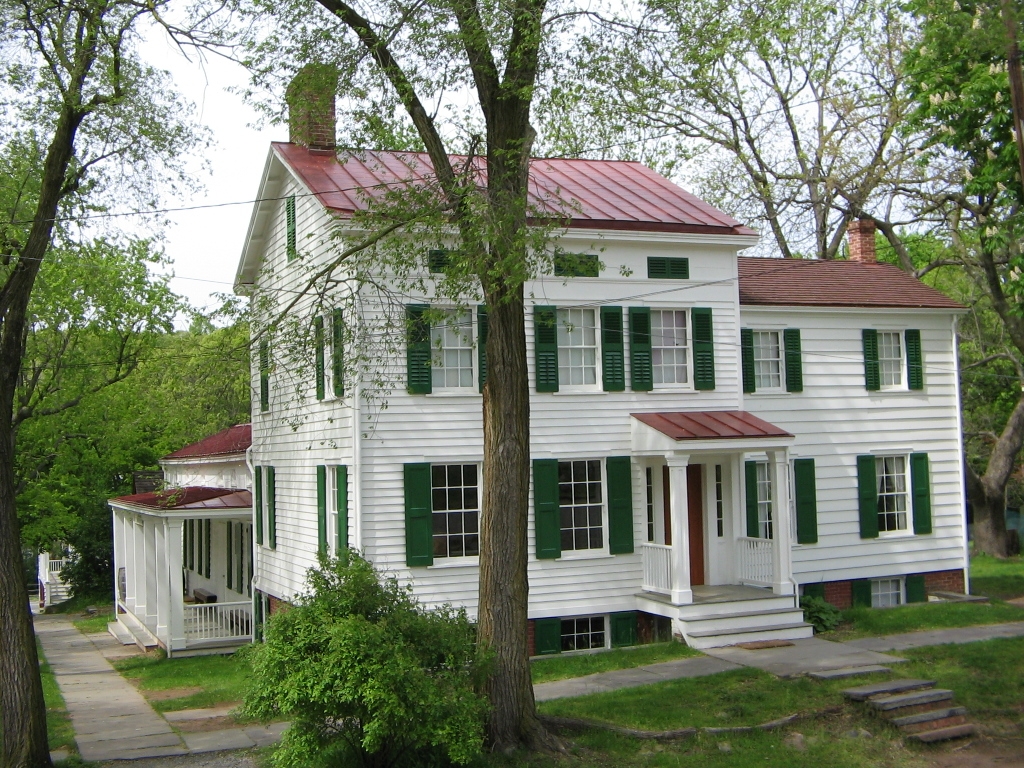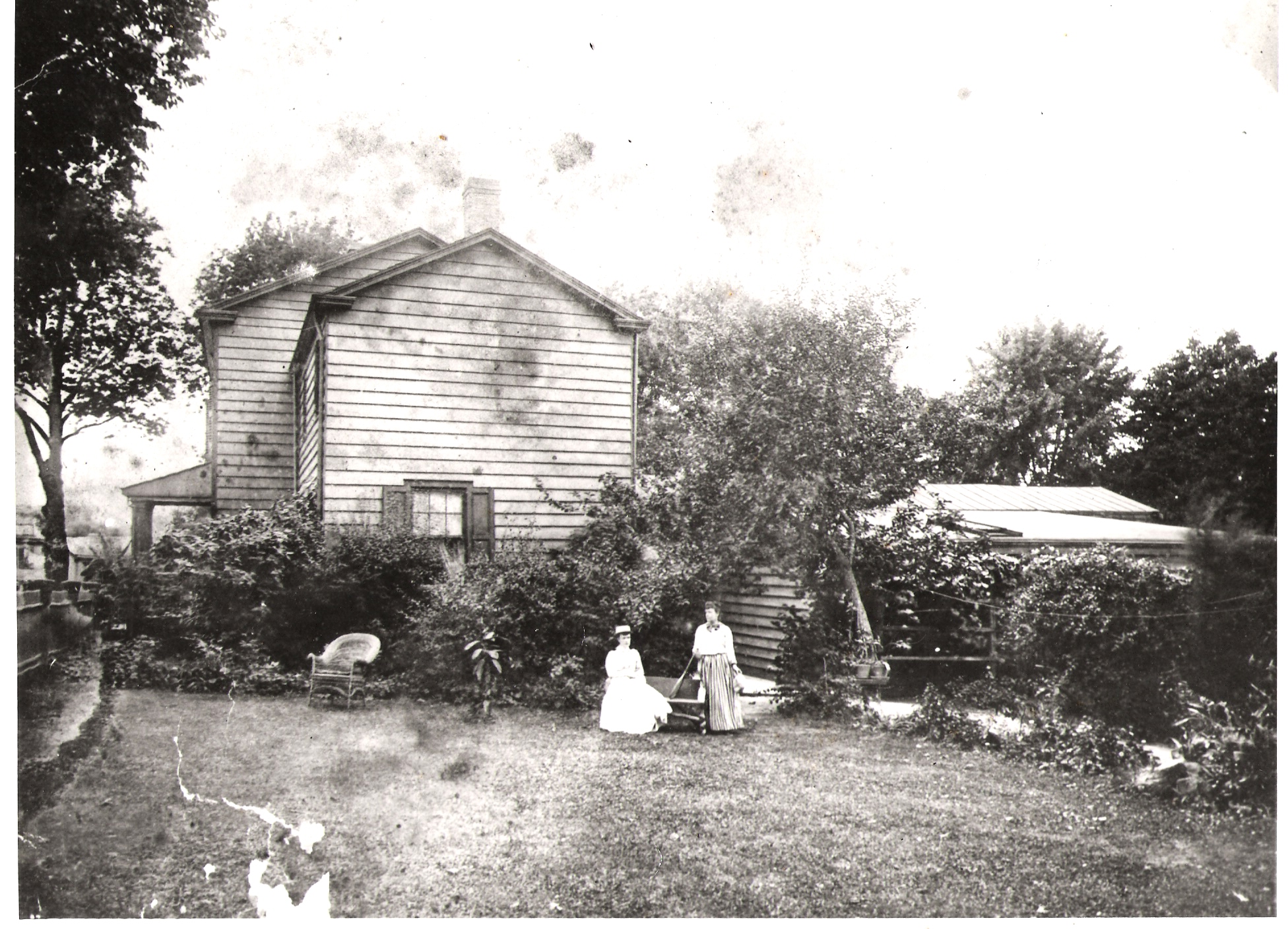Stephens-Black House #24



The Stephens-Black House stands in its original location on Center Street at the corner of Court Place, with the General Store adjoining the rear of the house and extending along Court Place. The house was erected ca. 1837, with an extension added to the east ca. 1838 and the store built at the rear about a year later. An example of Greek Revival domestic architecture, it is related in style to the nearby Bennett House; the Third County Courthouse, just across Center Street, shows the classic form of Greek Revival public architecture.
The house was built for Stephen Dover Stephens (1808-1883), a merchant, and his wife Elizabeth Johnson Stephens (1811-1883). The family resided in Northfield, Staten Island, before building their house in Richmond. In 1837 they purchased the land for their house from Henry I. Seaman, a prominent Staten Islander who in 1836 began to enlarge and develop the village of Richmond. Seaman acquired a large parcel of land between Richmond Road and Clarke Avenue, subdivided the land into lots, and built five small cottages. Seaman also donated to the county the parcel of land on which the Third County Courthouse was built in 1837.
The Stephens had five children: Lucretia, Charlotte, James, Mary, and Stephen D., Jr.; the two sons were both born in the house. The 1860 census also records that a woman named Bridget Clark resided in the house; she was listed as age 30, born in Ireland, and employed in general housework.
It is not known for certain how the various rooms of the house were used by the Stephens family. Part of the house may have been used as a school for young ladies. A notice in an 1846 edition of the New York Observer advertised that the Stephens were seeking 3 or 4 young ladies to board for "a thorough English education." This indicates that Miss Lucretia Stephens was accomplished enough to offer such an education, but there is no further evidence to tell us if the school ever opened.
Stephen D. Stephens Jr. was born in the house in 1845. He received his law degree from the Columbia School of Law in 1868, and served two terms in the New York State Assembly as a representative of Richmond County. In 1881 he was elected county judge and surrogate, and he presided over cases in the Third County Courthouse for the last 30 years of his life.
In 1870, the Stephens family sold the house to Mary Black. According to the 1870 census, Mary Black and her husband Joseph had twelve children living with them at the time, as well as a domestic servant named Kate Mar and a young man named James Waisley whose occupation was listed as “works in store.” Joseph Black (1817-1876) had been born in Coleraine, in Northern Ireland, and was of Scottish ancestry. His family, which had been in the linen and lace import business, immigrated to New York in 1832 and settled on Manhattan’s Lower East Side. Joseph’s wife Mary was a native New Yorker; she and Joseph both lived on Monroe Street in their youth, which is presumably how they met. They married in 1845 and their first child, Victorine, was born soon after.
By 1870, Victorine Black was 24 years old and soon to be married, and the youngest of the twelve children was an infant. After Mary and Joseph died, three of their daughters, Josephine, Mary and Sarah, continued to operate the general store and post office from about 1880 until about 1920, while also caring for their younger siblings. Another of the Black sisters, Euphemia (nicknamed Effie) may have died in her twenties. The oldest brother, James, probably headed the store during the 1870s, but may have left Staten Island by about 1880. Other brothers who also left Richmond in their adulthood pursued the selling of dry goods, thus continuing the family business in other locales. It is believed that Sarah Black was the last family member to reside in the house, and that she sold the property and moved to St. George in 1926.
In 1926, the house was purchased by Willett Leslie Conner and his wife, Bertha. The Conners were descended from prominent early families of Staten Island and were parents of 16 children. Willett's businesses included real estate and he also served as postmaster. After Willett Conner's death in 1932, Bertha Conner continued to operate the post office in the store wing. One son, Harold, visited Historic Richmond Town in 2006 and recalled that his family had a large barn in the yard behind the house, with pigeons and horses. The family lived in the house until 1946, when it was sold to Mollie Gottlieb, who was probably a non-resident landlord. Subsequent occupants included the Jacobs family and the Kish family. In 1953 the house became property of New York City. The building was designated a New York City landmark in 1969.
The building is open to visitors. The house is interpreted to ca. 1860 and has been installed with historically accurate reproduction wallpaper, carpet, and window treatments. Archival material and artifacts pertaining to various people who lived in the house are among the collections maintained at Historic Richmond Town, and some are available in the Online Collections Database.
